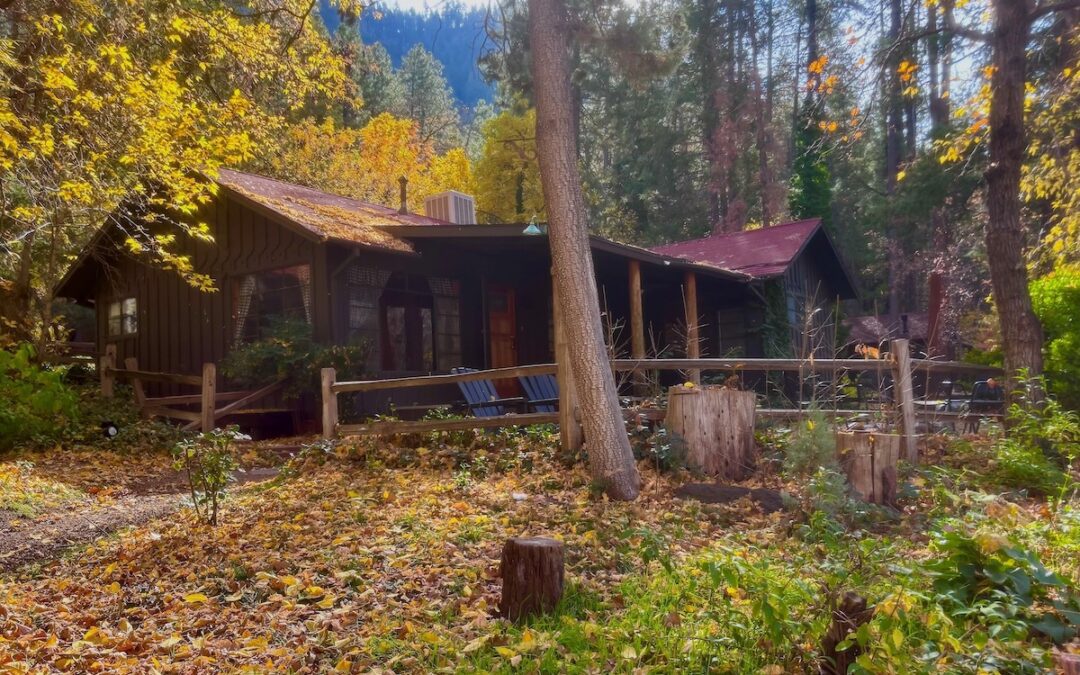
(Shutterstock Photo)
According to the experts at Rock Seeker, Arizona is “one of the highest caliber rockhounding states,” as its old mining dumps and stream beds lure in collectors from around the globe.
Although the treasure trove exists year-round, exhibitors unite in Arizona every winter for the Tucson Gem and Mineral Show, the largest and oldest rock show of its kind in the world (though maybe not the type of rock show some of our readers are interested in, we admit).
Since the state has so much to offer in terms of rock hunting, you may not know where to start. That’s where our handy guide comes in.
What You Need (and Need To Know) Before You Go
Before you embark on your rock-hunting adventure, you need to know all the necessary rules and regulations. You’ll also want a tool or two to aid in the process.
Follow the Law
Unlike many other states, it’s legal to collect rocks on Arizona’s public land. However, there are a few guidelines you must follow.
The specimens must be for personal rather than commercial use, you can only collect up to 25 pounds per day (with a limit of 250 pounds per year), and you can’t collect rocks from protected areas unless otherwise specified. The Arizona State Parks website notes that while it bans the removal of items from its property, other agencies like the Arizona State Land Department, Bureau of Land Management, and the US Forest Service may provide permits for these activities. Rock hunting is not allowed on National Park Service land.
If you search on private or tribal land, you have to obtain express permission to do so from the property owner.
Come Prepared
Rockhounding is one of the few hobbies that you can do without any equipment—all you need is your own two eyes.
However, certain supplies make the process a whole lot easier and will help you yield more (and cooler) native stones.
Consider bringing close-toed shoes, a backpack, a black light, rock hammers, brushes, gloves, a rock chisel, and a jeweler’s loupe. If these aren’t the types of things you have lying around the house, you can buy a whole set of tools on Amazon.
The Coolest Rocks and Minerals You’ll Come Across in Arizona
The most common rocks in Arizona might be silt, basalt, and limestone, but they’re definitely not the coolest.
Petrified Wood

Photo courtesy of Petrified Forest National Park via Instagram
Arizona has so much petrified wood that it’s home to a national park that’s named after it. Technically a fossil, petrified wood forms when vegetation gets buried beneath sediment, which protects it from decay. Then, groundwater replaces the wood with minerals like silica, pyrite, and calcite.
When you come across petrified wood, it may look like a slice of a tree trunk, but it’s much heavier and likely contains bright colors from the presence of trace metals. Just like snowflakes, each piece of petrified wood is completely unique, with an unrepeatable infusion of minerals.
Peridot

Photo courtesy of knkminerals via Instagram
Peridot is the name given to gemstone-quality olivine, which is a mineral, and Arizona produces more of it than anywhere else in the world. This alluring gem comes in various shades of green and is primarily found in the San Carlos Reservation.
Apache Tears

Photo courtesy of Soul Emporium via Instagram
The name of this stone comes from Apache lore. As legend has it, a battle between the US Cavalry and Apache warriors in what is now Superior, Arizona led to the defeated warriors jumping off a cliff to their deaths. The tears of the tribal people who witnessed the horrific event reportedly formed into stones upon hitting the ground.
The people of Arizona hold these small pieces of obsidian volcanic glass in high regard, and specimens have been collected and sold throughout the state’s lapidary history.
Fire Agate
This semi-precious gemstone is so rare that it can only be found in northern Mexico and the American Southwest. Formed by volcanic activity, fire agate is known for its vibrant and iridescent reddish hues. If you’re lucky enough to find one of these, it will certainly brighten up your rock collection.
Turquoise

Photo courtesy of Kingman Turquoise Mine via Instagram
Turquoise is the official gem of Arizona, as the state was once the world’s leading producer of the stone. More than 1,000 years ago, Native Americans in the area used turquoise to make jewelry and art—and they still do to this day (just check out this Navajo-owned company, Turquoise Mountain).
Throughout the years, several Arizonan mines have become world-famous for producing unique varieties of the stone. According to Geology.com, they include “Kingman (famous for its ‘high blue’ color and black matrix), Sleeping Beauty (known for its soft blue color and lack of matrix), Morenci (known for its dark blue color and pyrite-studded matrix), and Bisbee (known for its high blue color and chocolate-color matrix).”
Amethyst

Photo courtesy of crystal_phife via Instagram
Amethyst is a member of the quartz family that’s known for being a powerful and protective stone, and Arizona is home to the only steady source of it in the United States: Four Peaks Mine.
Located in a remote location of the Mazatzal Mountains, the mine produces amethyst that ranges from pale lilac to deep magenta in hue.
Ant Hill Garnet

Photo courtesy of Columbia Gem House via Instagram
You might find ants annoying, but these tiny creatures give Arizonan rockhounds one of the greatest gifts of all: ant hill garnets. When digging tunnels, the little buggers end up pushing these rare gemstones to the surface of their ant hills, making the garnets easily accessible to you and me.
These gemstones typically come in a rich, ruby-red color and have been collected by the Navajo and Hopi tribes for centuries.
The Best Places To Rock Hunt in Arizona
From metropolises to rural deserts, these are the ultimate destinations for Arizonan rock hunters.
Phoenix
Fortunately, there are tons of excellent rockhounding sites within the general area of Arizona’s capital.
In the streams of both the New and Agua Fria rivers, you can find agate, jasper, and chalcedony. In the diggings near Rock Springs, you might be lucky enough to find turquoise and other copper-stained minerals.
Last but certainly not least, there’s the Four Peaks area of the Mazatzal Mountains. It takes a brave and adventurous soul to get there, but this area is known as a rock collector’s paradise, mainly due to the beautiful and bountiful amethyst deposits found in the loose dirt.
These high-quality gems even have their own name—Four Peaks Amethyst—to characterize the vibrant purple color and clarity found exclusively in these parts. It’s definitely worth the hike.
Cave Creek
If you travel about 30 miles northeast of Phoenix, you’ll find an area that’s rich in rocks and minerals.
Red Rover Mine contains chalcocite and tetrahedrite, while Go John Mine contains red jasper, blue quartz, copper, and precious metals. According to Rockhound Resource, there’s a quartz outcrop off of a jeep road where you can find nodules and thundereggs, which are similar to geodes.
Payson
This town in central Arizona is a rockhound’s heaven—especially those who are fascinated by fossils. Although many of the cool native rocks are in the surrounding National Forest where collecting is a no-go, there’s a popular, visitor-friendly paleo site just off State Route 260.
TripAdvisor reviews call it a “fossil bonanza” and “a great place for science nerds or kids with a passion for science.” They also suggest bringing your tool set with you, especially a rock hammer and chisel.
Kingman
Kingman, Arizona, is home to many abandoned mines, including Kingman Feldspar Mine (where you can find quartz crystals), Emerald Isle Mine (where you can find chrysocolla and tenorite), BiMetal Gold Mine (where you can find placer gold), and Vanderbilt Mine (where you can find galena, pyrite, stibnite, and sphalerite).
Plus, in the area by Meadow Creek Pass, you might come across grape and/or fire agate.
Woodruff
Although most of the state’s petrified wood is inside the Petrified National Forest, collecting rocks there is expressly prohibited. The next best thing is Woodruff, a community in Navajo County.
According to one rockhounder, here’s how to get to the prime spot: “Take 77 south from Holbrook 6.5 miles to the left turn to Woodruff. From that turn, travel 4.8 miles to the BLM land road (gate).” Apparently, “You will have AMPLE supplies to pick from,” as various sizes of petrified wood abound.
Burro Creek
Burro Creek, which is located in the Sonoran Desert Canyon, draws in adventurers due to its turquoise water, hiking trails, campgrounds, and most importantly, its myriad minerals and rocks.
Burro Creek is home to jasper, opal, pink pastelite, chalcedony, agate, and more.
Clifton
If reading about fire agate and turquoise excited you, you can find some for yourself in this small town near the New Mexico border.
The Limestone Gulch area houses gem-quality agate, while fire agate can be found in a spot just north of the Three-Way drive-in. In the York area, you’ll find fire agate as well as jasper and carnelian.
Special Permission Needed
Tolani Lake
A wash is a linear area where there’s concentrated water and nutrients that came from a larger area—kind of like a temporary river. In the Oraibi Wash of Tolani Lake, rock hunters can find agate, chalcedony, jasper, and even bits of petrified wood.
The surrounding area is full of indigenous plants and culture. In fact, Tolani comes from the Navajo phrase meaning “water collecting in a basin.” Rock hunters need permission to collect rocks here, as it is located on the Navajo reservation.
Garnet Ridge
Lastly, Garnet Ridge is the name of a town and old gemstone mine in Apache County, near the Four Corners (where Arizona, Utah, Colorado, and New Mexico meet). This is one of the only areas where Ant Hill Garnets can be found.
Periodic rains will wash the stones clean and allow you to find the small (less than 1 carat), dark-red gems at the bottom of ant hills. Rock hunters need permission to collect rocks here, as it is located on the Navajo reservation.
Editor’s note: This story was originally published in 2023 and republished in 2025.
READ MORE: Get outside at one of these 25 national parks close to Phoenix

The 10 best Arizona cabins for a cozy winter getaway
Winter is the reward that nature gives desert dwellers for surviving the dragon-breath days of summer. For the next few months, the desert feels so...

22 Arizona events to check out this weekend (Dec. 12-14)
This events list was first published in The Copper Courier’s daily newsletter. Sign up here. We're in the thick of holiday season now! As you can...

12 Phoenix food pantries to donate your time, money, & food to this holiday season
Do you have extra food, a little bit of time, or some cash to share this holiday season? Donating to Phoenix food pantries is a great way to help...

12 things to do with family and friends on Thanksgiving weekend in Arizona
Don’t feel like turning your kitchen into a war zone this Thanksgiving? You’re not alone. Whether your turkey usually ends up more crispy charcoal...





